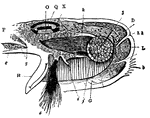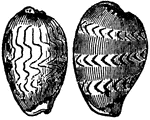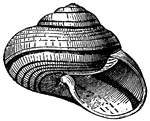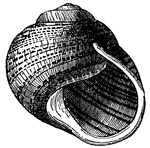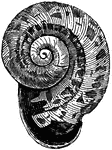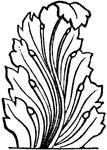
Acanthus
"The name given by the Greeks and Romans to the plants sometimes called Brancursine, of which it is…
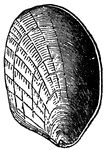
Aplysia Depilans (Linn.)
"The Molluscous Gasteropoda have the organs of respiration formed for aerial respiration or for respiration…

Aplysia Inca (D'Orbigny)
"The Molluscous Gasteropoda have the organs of respiration formed for aerial respiration or for respiration…
!["The Paper-nautilus, or Argonaut, [floats] gracefully on the surface of the sea, trimming its tiny sail to the breeze, just sufficient to ruffle the surface of the waves, it looks like an exquisite living shallop."](https://etc.usf.edu/clipart/51600/51666/51666_argonau_argo_mth.gif)
Argonauto Argo (Linnaeus)
"The Paper-nautilus, or Argonaut, [floats] gracefully on the surface of the sea, trimming its tiny sail…
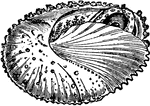
Argonauta Papyracea in its Shell
"The argonaut can blush, turn pale, and show through its transparent shell its body changing in sudden…
Argonauta Papyracea Swimming
"The principal apparatus of progression of the animal is the funnel with which it is furnished, in common…
Aspergillum Vaginiferum (Lamarck)
It has received the strange name of the Watering-pot because of a convex disk that is pierced with holes…

Buccinum Senticosum (Linnaeus)
"The Purpuras have a classical name and history, having furnished the Greeks and Romans with the brilliant…
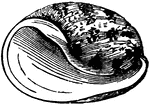
Bulla Ampulla (Linnaeus)
"The animals have a well-developed shell, the form of which is elegant and delicate in structure. They…
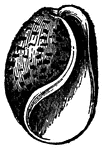
Bulla Aspersa (Adams)
"The animals have a well-developed shell, the form of which is elegant and delicate in structure. They…

Bulla Oblonga (Adams)
"The animals have a well-developed shell, the form of which is elegant and delicate in structure. They…

Cardium Aculeatum (Linnaeus)
"The familiar cockles are among the most widely distributed of shells. The greatest number are furnished…

Cardium Costatum (Linnaeus)
"The familiar cockles are among the most widely distributed of shells. An exotic species which inhabits…
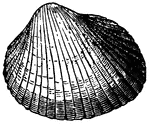
Cardium Edulis (Linnaeus)
"The familiar cockles are among the most widely distributed of shells. A species common to the Atlantic…
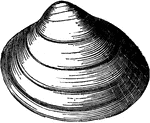
Cardium Groenlandicum (Chemnitz)
"The familiar cockles are among the most widely distributed of shells. The accessory ornamentation varies…
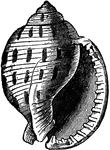
Cassis Canaliculata (Brugieres)
"In the genus Cassis the shell is oval, convex, and the spire is not of considerable height.…

Cassis Glauca (Linnaeus)
"In the genus Cassis the shell is oval, convex, and the spire is not of considerable height.…
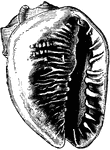
Cassis Madagascariensis (Lamarck)
"In the genus Cassis the shell is oval, convex, and the spire is not of considerable height.…
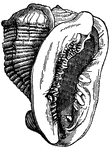
Cassis Madagascariensis (Lamarck)
"In the genus Cassis the shell is oval, convex, and the spire is not of considerable height.…
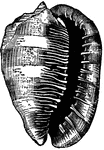
Cassis Rula (Linnaeus)
"In the genus Cassis the shell is oval, convex, and the spire is not of considerable height.…

Cassis Zebra (Lamarck)
"In the genus Cassis the shell is oval, convex, and the spire is not of considerable height.…

Cerithium Aluco.
"There are some species which are chiefly found in the muddy bottoms, and more frequently at the mouths…
Cerithium Fasciatum (Brug.)
"There are some species which are chiefly found in the muddy bottoms, and more frequently at the mouths…
Cerithium Giganteum (Lamarck)
"There are some species which are chiefly found in the muddy bottoms, and more frequently at the mouths…
!["In one genera [of the <em>Octopodidae</em> family] the arms are completely united in their whole extent by a thin membrane."](https://etc.usf.edu/clipart/51600/51665/51665_cirrh_muller_mth.gif)
Cirrhoteuthis Mulleri (Eschricht)
"In one genera [of the Octopodidae family] the arms are completely united in their whole extent…

Conus Gloria Maris (Chemn.)
"The genus Conus is especially rich in species, as well as numerous individuals. This group…

Conus Nobilis (Linn.)
"The genus Conus is especially rich in species, as well as numerous individuals. This group…

Conus Tescallatus (Born.)
"The genus Conus is especially rich in species, as well as numerous individuals. This group…

Conus Textilis (Linn.)
"The genus Conus is especially rich in species, as well as numerous individuals. This group…
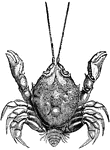
Corystes Cassivelaunus, female
"The anterior feet are about the length of the body. The other feet terminate in an elongated claw,…

Corystes Cassivelaunus, male
"The Long-clawed Crab is remarkable for its long antennae, which considerably exceed the length of the…
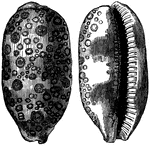
Cypraea Argus (Linn.)
"The Cowries are found at a little distance from the shore, generally in clefts of the rocky bottoms;…
!["The Madagascar Cowry [is] beautifully marked, having the general appearance of being mammillated all over."](https://etc.usf.edu/clipart/51500/51521/51521_cypra_madaga_mth.gif)
Cypraea Madagascariensis (Gmel.)
"The Madagascar Cowry [is] beautifully marked, having the general appearance of being mammillated all…

Cypraea Moneta (Linnaeus)
"The Money Cowry is a little, oval shell, depressed, flat below, with very thick edges and slightly…
!["The Granular Cowry [is] beautifully marked, having the general appearance of being mammillated all over."](https://etc.usf.edu/clipart/51500/51525/51525_cypra_nucleu_mth.gif)
Cypraea Nucleus (Linnaeus)
"The Granular Cowry [is] beautifully marked, having the general appearance of being mammillated all…

Cypraea Tigris (Linnaeus)
"The animal which inhabits these shells is elongated, and is provided with a well-developed mantle,…
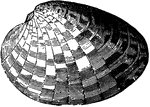
Cytherea Maculata (Linn.)
"Among the cast number of species belonging to the Veneridae family, many are extremely rare, and much…
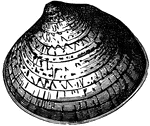
Cytherea Petechialis (Lamarck)
"Among the cast number of species belonging to the Veneridae family, many are extremely rare, and much…
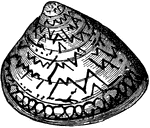
Cytherea Zonaria (Lamarck)
"Among the cast number of species belonging to the Veneridae family, many are extremely rare, and much…
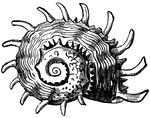
Delphinula Sphaerula (Kiener)
"The Monodonta are elegantly marked shells. Some curious specimens from this family come from…
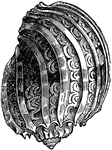
Harpa Ventricosa (Linnaeus)
"The genus Harpa contains shells from the Indian ocean, richly enameled within and ornamented…

Helix Aspersa (Var. Scalaris)
"The snails are male and female in the same individual, or hermaphrodite. The Romans had many species…
!["The snails are male and female in the same individual, or hermaphrodite. [This is] the favorite culinary snail in the region around Paris"](https://etc.usf.edu/clipart/51300/51387/51387_helix_pomati_mth.gif)
Helix Pomatia (Linnaeus)
"The snails are male and female in the same individual, or hermaphrodite. [This is] the favorite culinary…
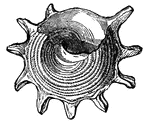
Imperator Stella (Lamarck)
"The Monodonta are elegantly marked shells. Some curious specimens from this family come from…

Imperator Stellaris (Lamarck)
"The Monodonta are elegantly marked shells. Some curious specimens from this family come from…

Limnaea Stagnalis (Linnaeus)
A thin diaphanous shell in which species of the genus Limnaea live. They can be found in the fresh waters…

Loligo Gahi (d'Orbigny)
"The Common Calmar or Squid. They propel themselves backward through the water with great velocity,…
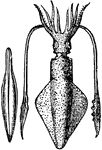
Loligo Vulgaris, with its pen, or internal bone (Lamarck)
"The Common Calmar or Squid. They propel themselves backward through the water with great velocity,…
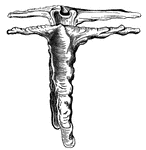
Malleus Alba (Lamarck)
"Only six actually living species of the genus have been found; these inhabit the Indian Ocean, the…
